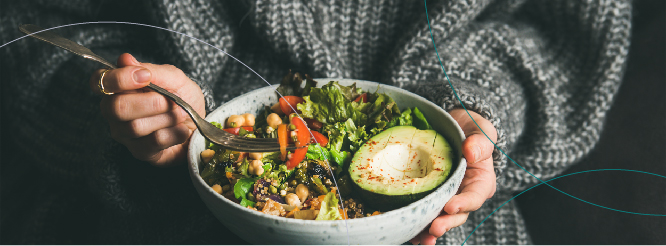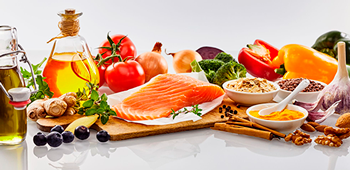
A change in diet is one of the main steps for anyone looking to lose weight or to improve their quality of life. When looking for a new diet, we have to make sure that we don’t fall for fad diets, which are diets that have become increasingly popular in a short amount of time. These diets promise quick weight loss results and health improvements with almost zero effort required. However, their unsustainable nature and lack of scientific evidence make them medically unsuitable for most people, especially if they don’t consult a dietitian or doctor first.
History and Background of BRAT Diet
The BRAT diet (Bananas, Rice, Applesauce, and Toast) was originally introduced in the mid-20th century as a way to manage gastrointestinal issues, particularly diarrhea and vomiting, in both children and adults. It was developed by pediatricians as a short-term solution to help patients recover from stomach illnesses and allow their digestive systems to rest.
Key Moments in BRAT Diet History
- Mid-20th Century Origin: Pediatricians developed the BRAT diet in the 1920s–1940s as a gentle, low-fiber regimen for patients experiencing gastrointestinal distress. These bland foods were thought to soothe the stomach, reduce nausea, and slow down bowel movements.
- Widespread Adoption: By the 1960s, the BRAT diet had become a common recommendation among doctors and healthcare providers for managing acute gastroenteritis, particularly in children. It was easy to follow, and the specific foods were believed to help rebind the stool and minimize stomach upset.
- Scientific Criticism: In the early 2000s, medical professionals began questioning the effectiveness of the BRAT diet. It was criticized for being nutritionally inadequate, especially if followed for more than a day or two, as it lacked essential nutrients such as protein, fat, and vitamins needed for recovery.
- Current Usage: Today, the BRAT diet is still sometimes recommended, but it’s often combined with more balanced, nutrient-rich options. Modern guidelines suggest the introduction of a wider variety of foods sooner, including those rich in protein and healthy fats, while ensuring patients remain hydrated through fluids and electrolyte solutions.
While the BRAT diet is no longer the primary treatment for stomach ailments, its simplicity and gentle nature make it useful for temporary relief in certain cases. However, healthcare providers now emphasize the importance of a more balanced and nutritious approach to recovery.
There are many diets that, if carried out correctly and are approved by your doctor, can benefit you and help you achieve your weight loss goals.
One of them is the BRAT diet, whose acronym stands for bananas, rice, applesauce, and toast, the four food components of the diet[1].
Many of our patients aim to change their diet, but it’s important that they have all the information before making drastic changes, such as following a diet without proper guidance. At LIMARP®, our medical team counts with licensed nutritionists that can help you achieve your goals. They go over your medical history and talk with you about your expectations to create a nutrition plan that covers all your needs; they will also determine if it is right for you, in the case that you’re interested in implementing it into your lifestyle.
In this article we’ll talk about the BRAT diet and delve more into its acronym and origins, as well as discuss if it’s ideal for losing weight. As always, we’d like to remind you that the following information may not apply to every case and that you should always talk to a nutritionist before starting any new diet, especially when it comes to the BRAT diet.
BRAT Diet: What to know
The BRAT diet is a bland diet that, as we have previously mentioned, consists of mainly eating bananas, rice, applesauce, and toast. It was first suggested for children who suffered from upset stomachs or other gastrointestinal problems, such as vomiting, diarrhea, or gastroenteritis. The initial logic behind the BRAT method was that “it gave the gut a chance to rest and reduced the amount of stool produced”[2].
Although it was mainly thought for children, the BRAT diet can also be followed by adults and one of the main recommendations is for everyone to keep hydrated in order to replace the depleted electrolytes and avoid salt imbalances.
Nowadays, the BRAT diet is no longer recommended for children because BRAT diet foods are low in fiber, protein, and fat, lacking enough nutrition to help a child’s gastrointestinal tract recover. The American Academy of Pediatrics recommends that kids resume eating a normal, well-balanced diet appropriate for their age within 24 hours of getting sick.
That diet should include a mix of fruits, vegetables, meat, yogurt, and complex carbohydrates[3].
However, if you’re an adult your nutritionist approves it, you may be able to follow the BRAT diet. Since it largely limits the types of food you can eat, it’s very important that you keep in touch with your doctor so that you don’t experience any negative side effects and ensure that everything concerning the BRAT diet is carried out safely. Next, we’ll discuss some of the foods you can and can’t eat while doing the BRAT diet.
BRAT Diet Foods: What to eat
The BRAT diet is also known as a bland one because you should only stick to soft foods that are gentle on the stomach. This, of course, includes the foods that make up for the BRAT acronym: bananas, rice, applesauce, and toast. However, there are also binding foods[4] that are also low on fiber and have the capacity to stop diarrhea, if that’s the case.
Other bland foods that you can eat while following the BRAT diet include[5]:
- Soft fruits: Bananas, applesauce, avocado, pumpkin, canned fruit (packed in water, not heavy syrup), and melons.
- Steamed or boiled vegetables: Carrots, green beans, potatoes, and squash.
- Low-fiber starches: White bread, white rice, saltine crackers, cream of wheat, instant oatmeal, and noodles.
- Protein: Unseasoned skinless baked chicken or turkey, scrambled eggs, yogurt, and kefir.
- Drinks: Bone broth, apple juice, coconut water, Pedialyte, weak tea.
When following the BRAT diet, you should avoid:
- Dairy products: Milk, cheese, and ice cream can be hard to digest and may worsen diarrhea or stomach discomfort.
- Fatty or fried foods: Greasy foods can be tough on the stomach and trigger nausea or exacerbate digestive issues.
- Spicy foods: Spices can irritate the stomach lining and increase discomfort.
- Raw fruits and vegetables: High-fiber produce like broccoli, beans, and leafy greens can be harsh on the digestive system.
- Alcohol and caffeine: Both can dehydrate you and irritate the stomach.
- Sugary foods: Sweets, soda, and desserts may increase diarrhea or upset the stomach further.
- Whole grains: Avoid whole grain breads and cereals, which are high in fiber and difficult to digest.
- Nuts and seeds: These are also high in fiber and fat, which are not recommended for a sensitive stomach.
Once symptoms improve, you can slowly reintroduce other foods into your diet.
Can the BRAT diet be used for weight loss?
In short, no. While some of the foods that we listed above are also found in many weight loss diets, what makes the BRAT diet different is that it is nutritionally lacking for long-term use because it lacks protein, fat, and fiber. This can lead to several negative side effects, such as tiredness, weakness, slow metabolism, and dehydration. Aside from dehydration, the long-term use of the BRAT diet can result in nausea, queasiness, diarrhea, or vomiting.
If you’re looking to lose weight in a healthy way, the BRAT diet is not ideal. We highly recommend that you talk to a nutritionist so that they can work with you in finding the right diet plan that goes according to your needs.
Contact Us to Learn More
If you want to learn more about the BRAT diet, schedule an appointment with one of our doctors. We can help determine the right treatment for you. Contact us online anytime or give us a call at (619) 373-0229.
References
- [1] Sheila Mackell, Traveler’s Diarrhea in the Pediatric Population: Etiology and Impact, Clinical Infectious Diseases, Volume 41, Issue Supplement_8, December 2005, Pages S547–S552, https://doi.org/10.1086/432950
- [2, 3] “The BRAT Diet”. https://www.webmd.com/children/brat-diet. (Accessed July 18th, 2023).
- [4] Ahlberg S, Randolph D, Okoth S, Lindahl J. Aflatoxin Binders in Foods for Human Consumption-Can This be Promoted Safely and Ethically? Toxins (Basel). 2019 Jul 14;11(7):410. doi: 10.3390/toxins11070410. PMID: 31337106; PMCID: PMC6669551.
- [5] “BRAT Diet: NUTRITION FOR NAUSEA, VOMITING OR DIARRHEA”, https://www.oregonclinic.com/diets-BRAT. (Accessed July 18th, 2023).


